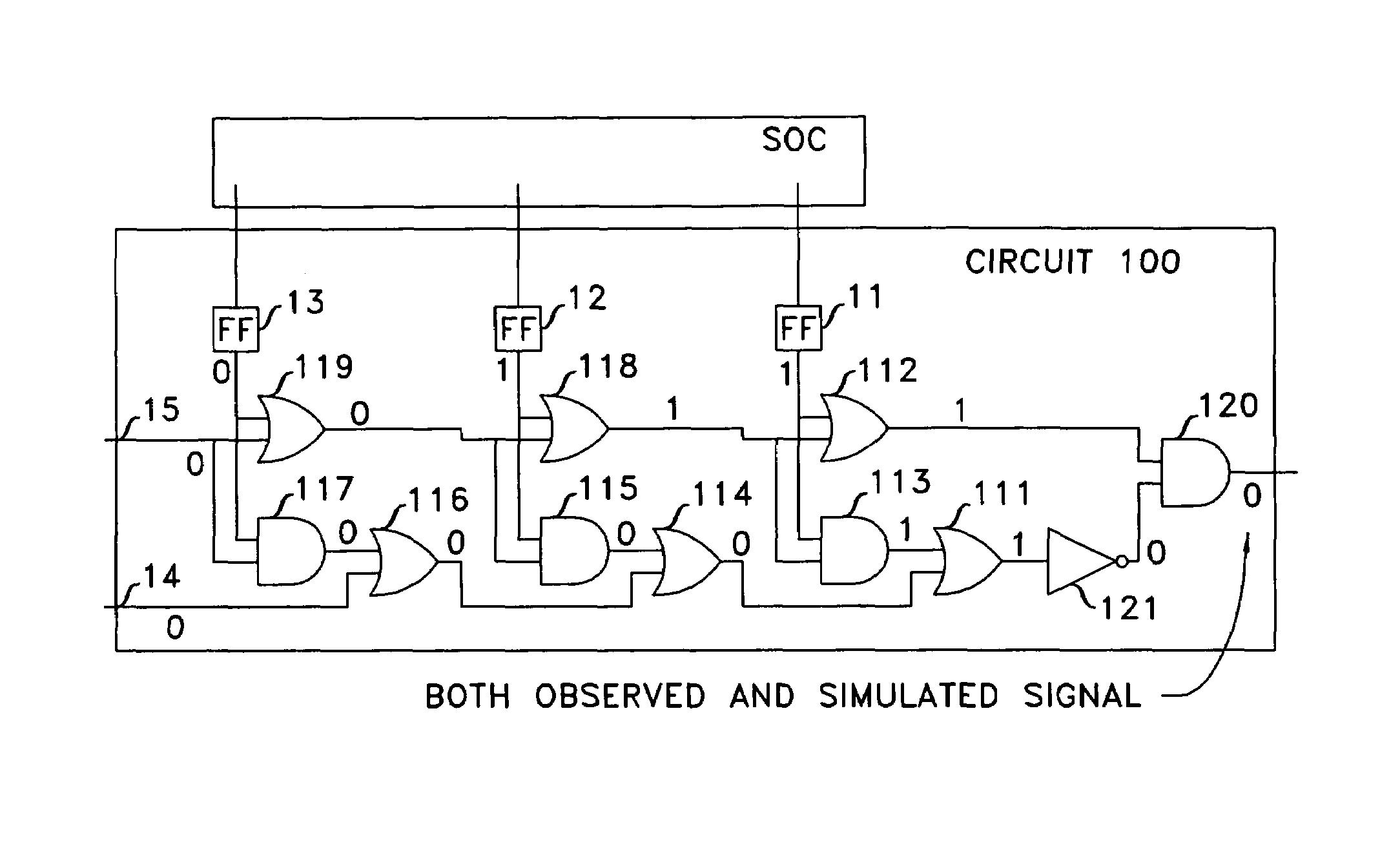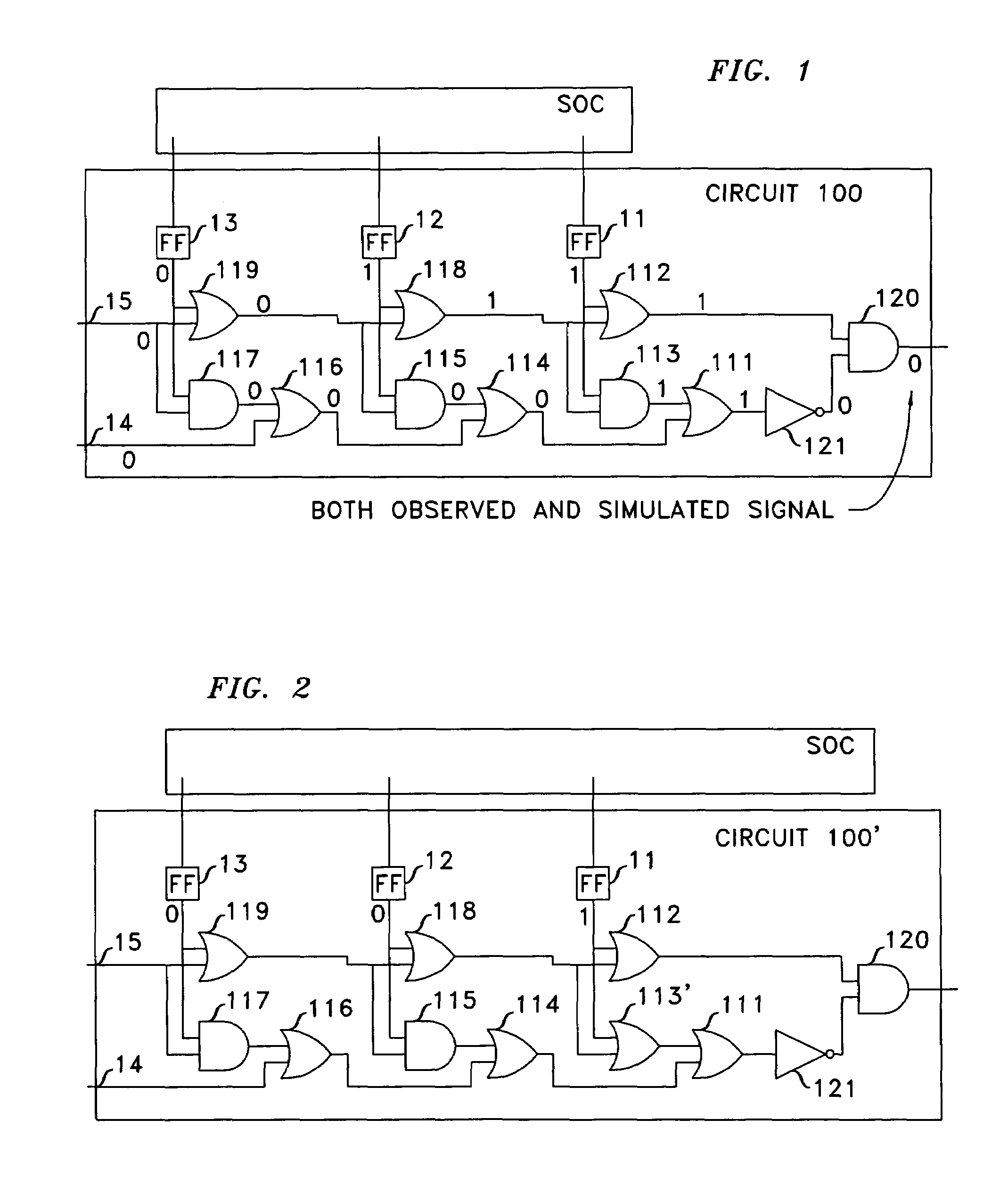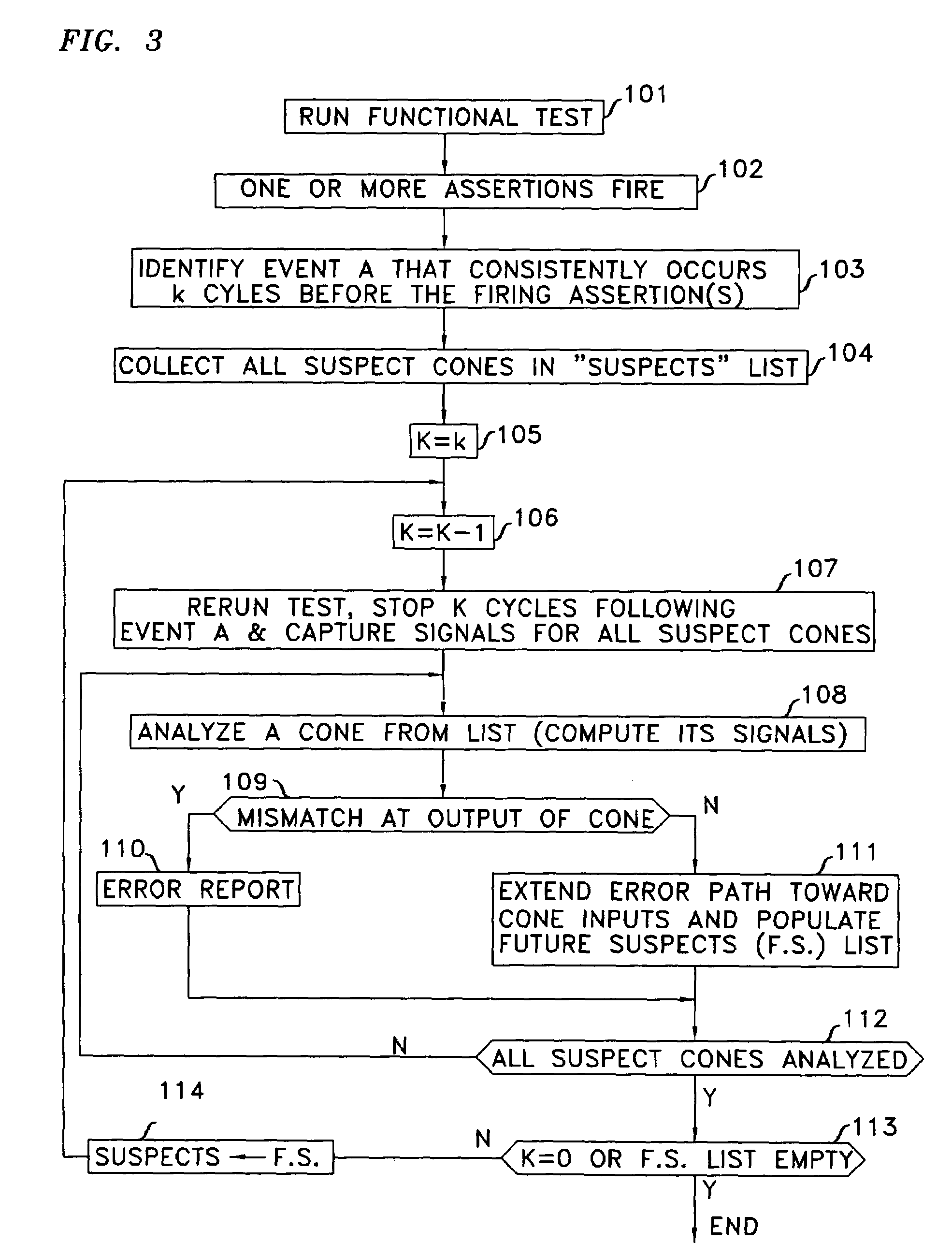Method to locate logic errors and defects in digital circuits
a logic error and digital circuit technology, applied in the field of digital circuits, can solve problems such as error detection and error generation
- Summary
- Abstract
- Description
- Claims
- Application Information
AI Technical Summary
Benefits of technology
Problems solved by technology
Method used
Image
Examples
Embodiment Construction
[0016]The principles disclosed herein are applicable to integrated circuits where the values of at least some internal signals can be observed. Since in most ICs all flip-flops have a mode of operation in which they are connected to form shift registers (scan chains), their values can be read by a scan-out operation when the normal operation has been stopped, and therefore, the principles disclosed herein have wide applicability and are of great advantage to the field of IC design, manufacturing, and testing.
[0017]At the outset, it is useful to define the notions of a “fanin cone” and a “suspect cone” as used herein. In its simplest form, a “fanin cone” is a single-output circuit that corresponds to that portion of possibly a larger combinatorial circuit (for example, within an IC) that potentially affects the value of that single output. The input signals of a fanin cone are either primary inputs of the IC (whether it is an SoC or not), or output signals of memory elements within t...
PUM
 Login to View More
Login to View More Abstract
Description
Claims
Application Information
 Login to View More
Login to View More - R&D
- Intellectual Property
- Life Sciences
- Materials
- Tech Scout
- Unparalleled Data Quality
- Higher Quality Content
- 60% Fewer Hallucinations
Browse by: Latest US Patents, China's latest patents, Technical Efficacy Thesaurus, Application Domain, Technology Topic, Popular Technical Reports.
© 2025 PatSnap. All rights reserved.Legal|Privacy policy|Modern Slavery Act Transparency Statement|Sitemap|About US| Contact US: help@patsnap.com



